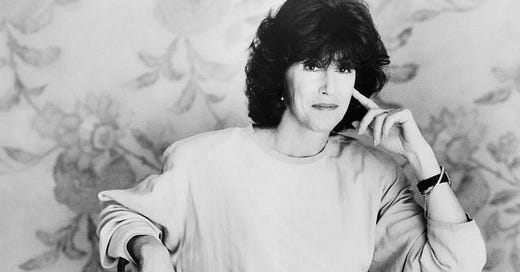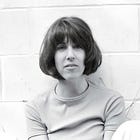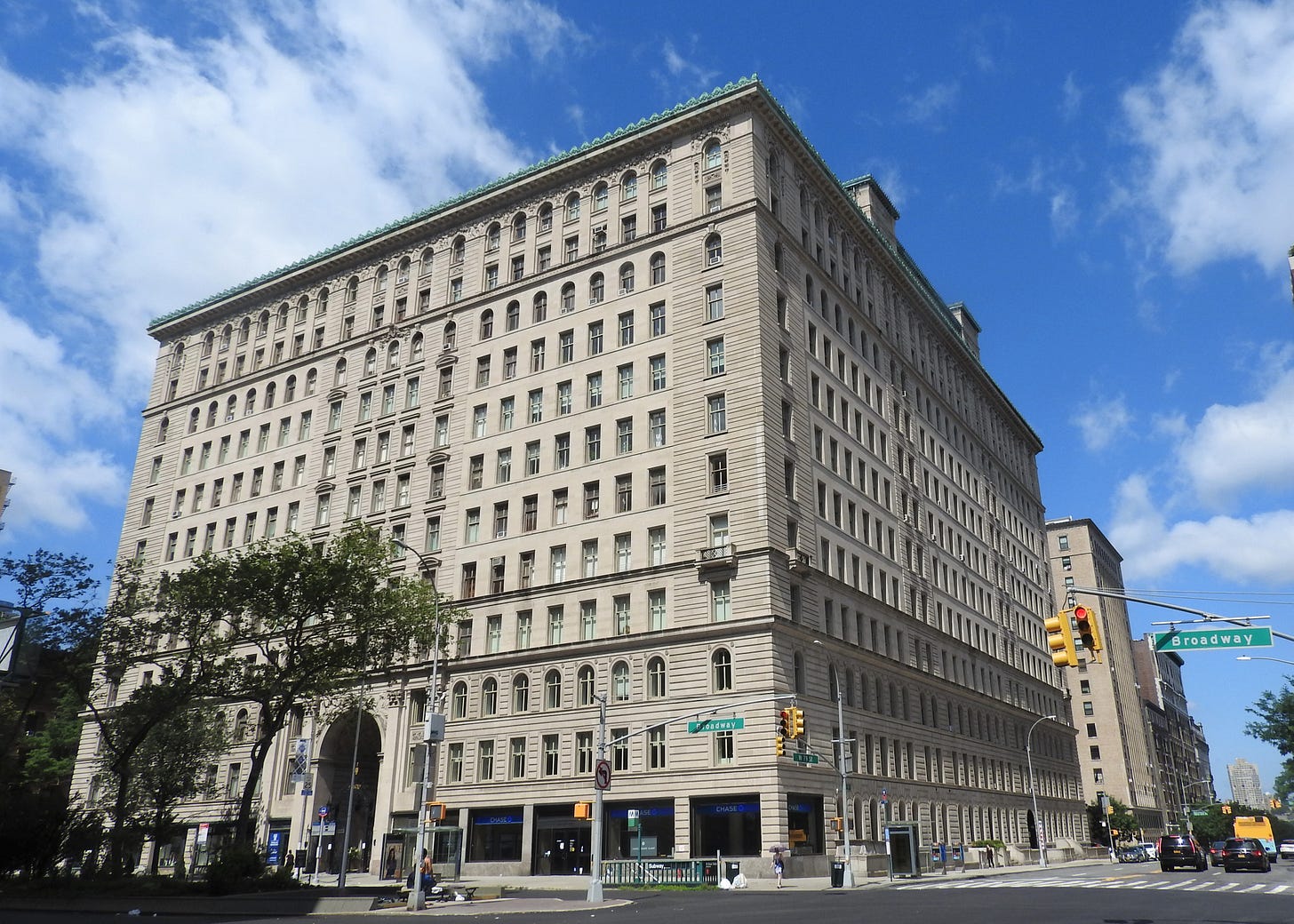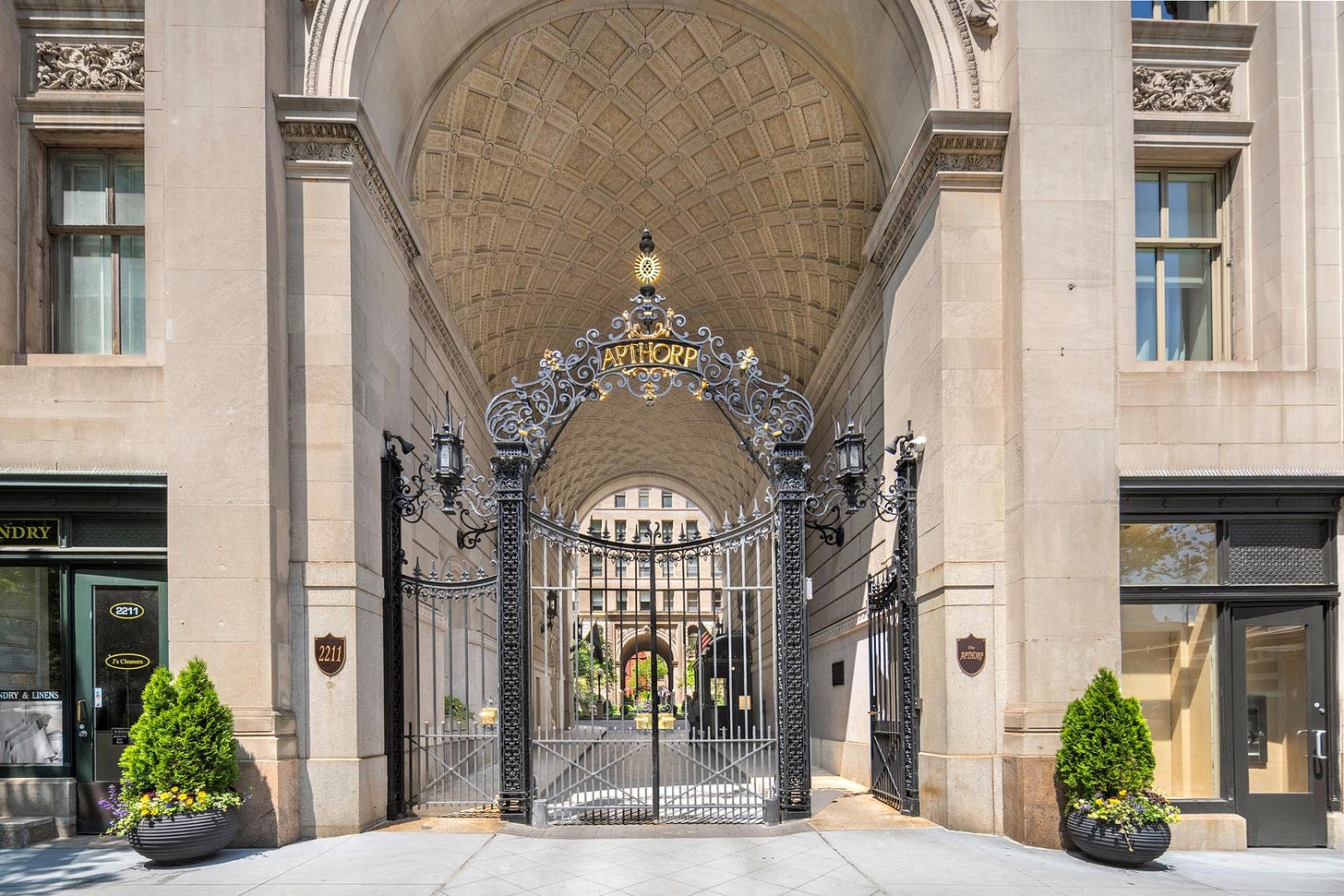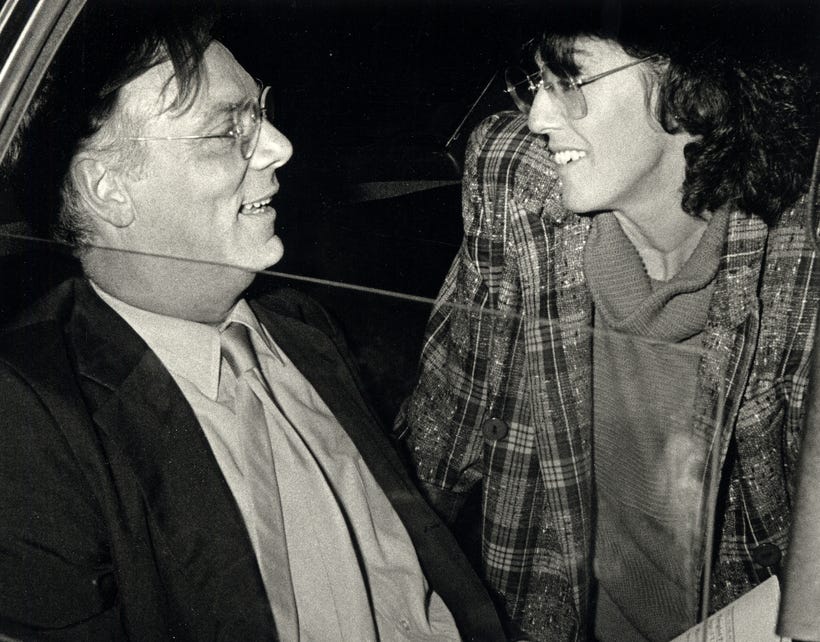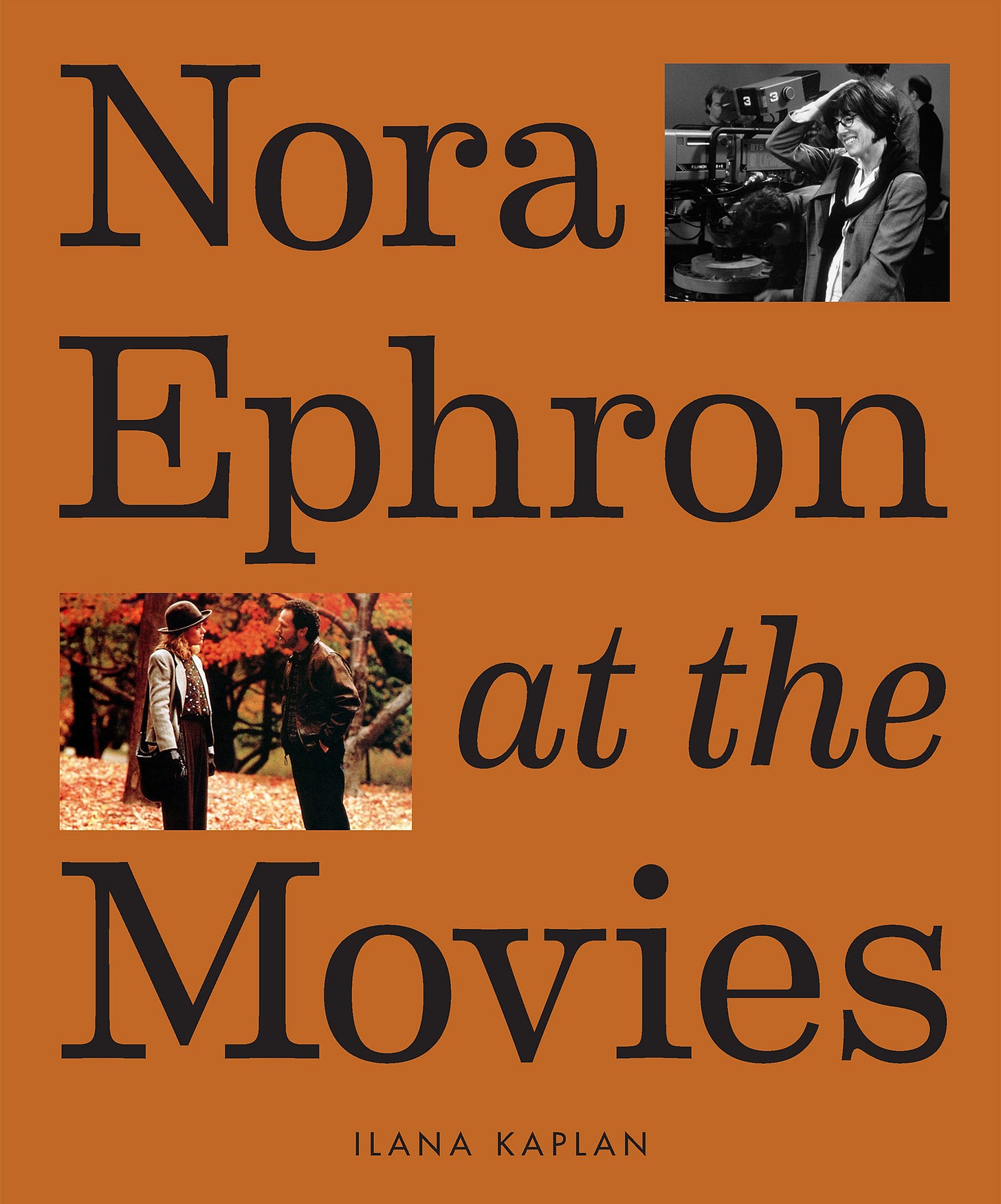If you are after a refresher of Nora’s New York story so far, here are Parts 1 & 2:
And now on to Part 3!
As mentioned at the end of Nora Ephron: A Born New Yorker - Part 2, Nora was back in her beloved New York, and began her search for an affordable rental apartment that would fit herself, Jacob, Max and their nanny. While home hunting in the February of 1980, Nora fell in love…with an apartment building.
Built in 1904, in the Italian Renaissance Revival style, The Apthorp fills an entire city block and is located on the corner of Broadway and Seventy-ninth Street. In her essay Moving On: A Love Story, Nora recalled her first glimpse of The Apthorp, “One afternoon I walked just ten steps into an apartment on the Upper West Side of Manhattan, and my heart stood still. Head over heels. This was it. At first sight. Eureka. Ten steps in and I said, I’ll take it.” The focus of her ardour was an apartment with “beautiful rooms, most of them painted taxicab yellow (but that could easily be fixed); high ceilings; lots of light; two gorgeous (although non-working) fireplaces; and five, count them, five bedrooms.”
Living in the apartment of her dreams set her back quite a tidy sum, but that is a story for another newsletter, and as Nora said in her ode to The Apthorp, “… never mind the money. This, after all, is not a story about money. It’s a story about love. And all stories about love begin with a certain amount of rationalization.”
Although Nora hadn’t pictured living on The Upper West Side, she fell for the neighbourhood almost as quickly as she fell for The Apthorp. Of her early relationship with the UWS, Nora recalled “…after a few weeks, I couldn’t imagine living anywhere else, and I began, in my manner, to make a religion out of my neighbourhood.”
With things looking up in her personal life after finding her haven at the Apthorp, Nora was able to use the Phoebe Ephron maxim of Everything is Copy to write about the end of her marriage to Carl Bernstein in her first and only foray into the world of the novel, Heartburn. In the introduction to the 2004 Virago Modern Classics edition, Nora wrote “… I knew the moment my marriage ended that someday it might make a book -
if I could stop crying. One of the things I’m proudest of is that I managed to convert an event that seemed to me hideously tragic at the time to a comedy - and if that’s not fiction, I don’t know what is.”.
Published on March 12 1983, the fictionalized version of her second marriage tells the story of Rachel Samstat, a food writer, who at seven months pregnant discovers that her husband Mark Feldman, a political journalist, is having an affair. Interspersed throughout are recipes, such as the now iconic salad dressing, her famous key lime pie, four-minute eggs (cooked in three minutes), and the rather unappetizing sounding lima beans with pears.
Carl was not thrilled about the best-selling novel, but Nora had this to say in the Heartburn introduction, “Everyone always asks, Was he mad at you for writing the book? and I have to say, Yes, yes, he was. He still is. It’s one of the most fascinating things to me about the whole episode: he cheated on me, and then got to behave as if he was the one who had been wronged because I wrote about it! I mean, it’s not as if I wasn’t a writer. It’s not as if I hadn’t often written about myself. I’d even written about him. What did he think was going to happen? That I would take a vow of silence for the first time in my life?”.
Nora’s success with her one and only novel Heartburn, was also reflected in the screenwriting career she’d embarked on in the late 70s with Perfect Gentlemen. She wrote/co-wrote 4 screenplays in the 80s, Silkwood (Dir. Mike Nichols, 1983) co-written with Alice Arlen, the film version of her novel Heartburn (Dir. Mike Nichols, 1986), Cookie (Dir. Susan Seidelman, 1989) again co-written with Alice Arlen, and one of the quintessential New York movies, the ever iconic When Harry Met Sally (Dir. Rob Reiner, 1989). She also continued writing essays and columns for magazines such as Esquire and The New Yorker throughout the 1980s. Her career was going as strong as ever, her love affair with the Apthorp was still in full swing, and Nora was about to fall head over heels in love with her third (and best) husband. Enter Nicholas Pileggi.
Nora described the 1934 film The Thin Man, starring Myrna Loy and William Powell as Nora and Nick Charles, as “one of the only movies about marriage.”. Fun fact: Phoebe and Henry Ephron were friends with the married screenwriting duo behind the first three Thin Man films, Frances Goodrich and Albert Hackett). In an interesting twist of fate, she (re)met the Nick to her Nora in the 1980s in the form of Nick Pileggi, a fellow New Yorker and journalist, and author of Wiseguy: Life in a Mafia Family, which would later become the film Goodfellas.
In a 2013 interview, Nick recalled their meeting(s) “I first knew Nora in the middle 60s, when she was working at the New York Post and then we worked on New York magazine together in 1968. But of course we were both married at the time, and we were just friends, then in 1979 her marriage broke up and so did mine. And we connected again a few years later. It was always like we should have been together longer, but I guess that would have been a different story.”
Nora recalled reconnecting with Nick in her essay The Story of My Life in 3,500 Words or Less “I’m having dinner at a restaurant with friends. A man I know comes over to the table. He’s a famously nice guy. His marriage broke up at about the same time as mine did. He says, “How can I find you?”. And the rest, as they say, is history. Nora and Nick were married in 1987 in her Apthorp apartment “in front of the nonworking living room fireplace.”. Lauren Shuler Donner recalls Nora telling her about the wedding on their first meeting, and lamenting “I should have catered it.”.
Nora lived harmoniously with two of her greatest loves, Nick and her Upper West apartment, through the 80s until the mid 90s. Sadly, as sometimes happens with great loves, Nora’s love affair with The Apthorp came to an end. She’d made a religion out of The Apthorp and the Upper West Side, and was now planning a move to the Upper East Side.
“And just like that, I fell out of love… I called a real estate broker and began to look at apartments. Unrequited love’s a bore, as Lorenz Hart once wrote. It had taken me significantly longer to come to that realization in the area of real estate than it ever had in the area of marriage, but I was finally, irrevocably there. Since I was involved in a one-sided affair with the building, falling out of love was fairly uncomplicated.”
Moving On: A Love Story
Join me in the fourth, and final, part of Nora Ephron: A Born New Yorker for more on The Upper East Side, and how her love of New York is reflected in her films.
The lovely Ilana Kaplan’s Nora book is now out in the world!
Nora Ephron at the Movies, the first illustrated monograph on Nora, with a foreword by author Jason Diamond, “offers an unfiltered look at Ephron as a champion of the rom-com and as a feminist Hollywood trailblazer. It explores her life and work by pairing detailed criticism with exclusive interviews with Ephron’s key collaborators to add color and nuance to her life and legacy.” - Abrams Books
Nora Ephron at the Movies is available in hardback and ebook formats, and the audiobook is read by Matilda herself, Mara Wilson.
The Apthorp, 2211 Broadway - CityRealty
Moving On: A Love Story in I Feel Bad About My Neck - Nora Ephron, 2006
Heartburn - Nora Ephron, 1983, Alfred A. Knopf
Nora Ephron’s Favorite Love Stories - Austin Film Society
Nicholas Pileggi: the mob, Nora Ephron's death and Vegas - Tim Adams, 2013
The Story of My Life in 3,500 Words or Less in I Feel Bad About My Neck - Nora Ephron, 2006
How I Remember Nora Ephron - Meg Ryan, 2012
The Podcast Around the Corner is available on Buzzsprout, and wherever you get your podcasts. You can find the show @TheNoraPodcast on Twitter and Instagram.

